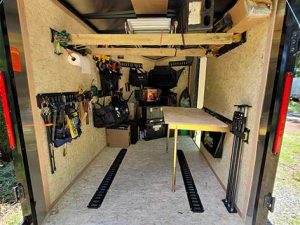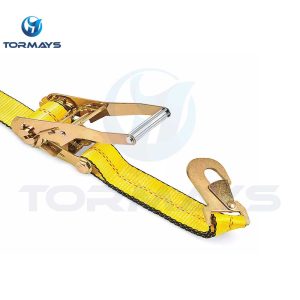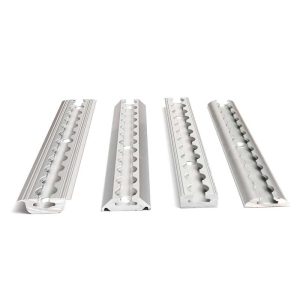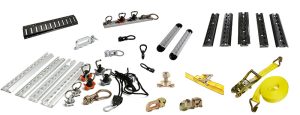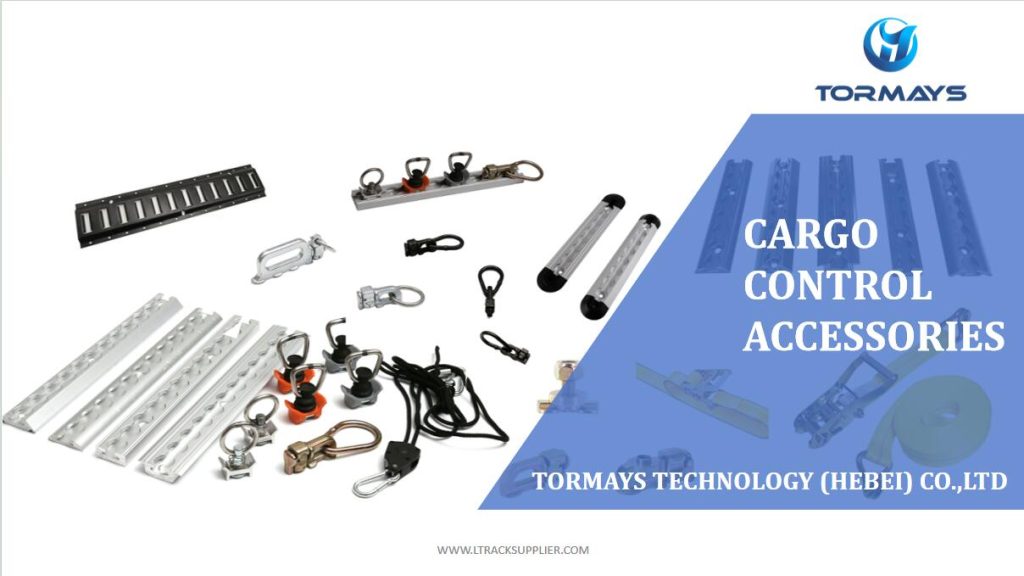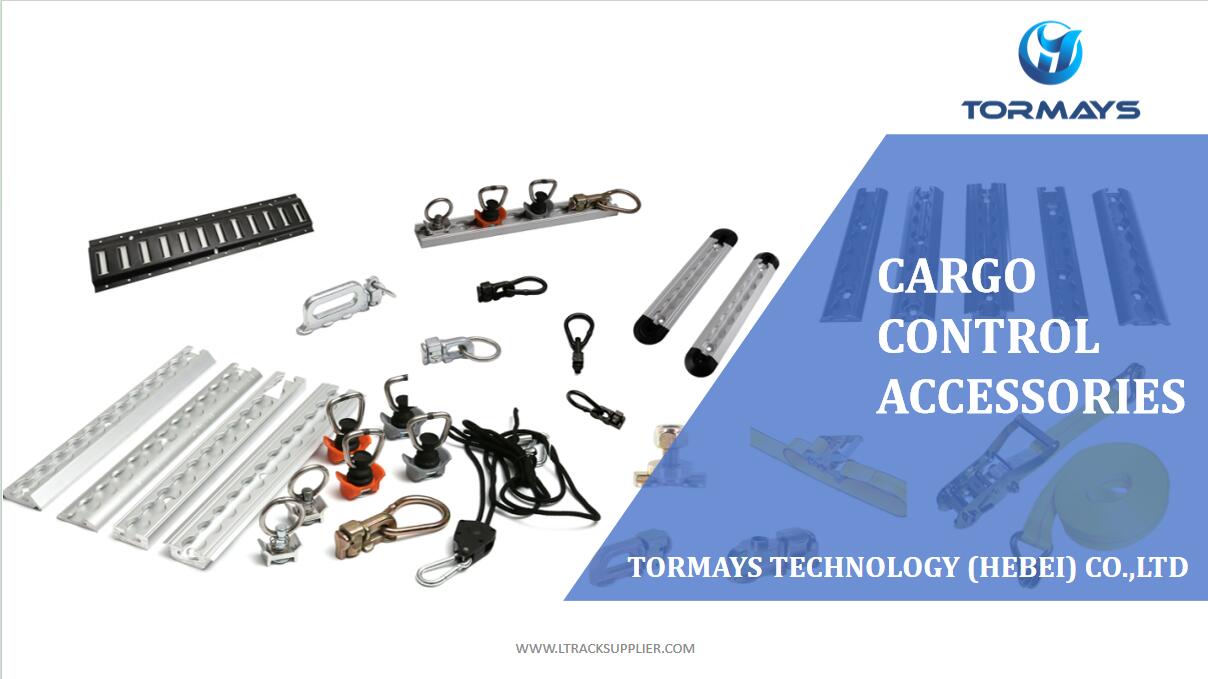L Track, also known as airline track or logistic track, is a versatile cargo securing system widely used in trucks, trailers, vans, and other transport applications. Its strength and adaptability make it a favorite for securing loads, but a common question among users is: How much force can L Track stand? This blog explores the load limits of L Track, factors that affect its strength, and practical tips for ensuring safe cargo transportation.
What is L Track?
L Track is a heavy-duty aluminum track designed with evenly spaced holes for attaching various fittings and tie-downs. It is commonly installed on walls, floors, or ceilings of vehicles to secure cargo during transit. The system is highly flexible and can be used for anything from securing wheelchairs in vans to anchoring motorcycles or heavy machinery in trailers.
Key Features of L Track:
– Durability: Made from high-strength aluminum, resistant to corrosion and wear.
– Versatility: Compatible with a wide range of accessories, including single studs, double studs, and other tie-down hardware.
– Space Efficiency: Its low-profile design makes it easy to install in tight spaces.
How Much Force Can L Track Withstand?
The amount of force an L Track can handle depends on several factors, including the type of L Track, the installation method, and the type of fittings used. Here’s a breakdown of the key considerations:
1. Types of L Track
There are various types of L Track, each designed for specific applications. The weight capacity varies among these types:
– Standard L Track: Typically supports loads up to 1,000–2,000 lbs per attachment point.
– Heavy-Duty L Track: Designed for industrial applications, it can withstand up to 4,000 lbs per attachment point.
– Recessed L Track: Similar in strength to standard L Track but installed flush with the surface for a sleeker design.
2. Material and Construction
Most L Tracks are made from 6061-T6 aluminum, a material known for its excellent strength-to-weight ratio. The track’s ability to withstand force also depends on its thickness and overall design.
3. Installation Method
Proper installation is crucial for maximizing the force capacity of L Track. Factors influencing its strength include:
– Anchor Points: Tracks secured with bolts and backing plates distribute force more effectively.
– Surface Material: L Tracks mounted on sturdy surfaces like steel or thick plywood can handle greater loads compared to those on lighter materials.
4. Type of Fittings
The tie-down fittings used with L Track significantly impact its weight-bearing capacity. For example:
– Single Stud Fittings: Typically rated to handle up to 2,000 lbs of force.
– Double Stud Fittings: Provide additional strength, often rated for up to 4,000 lbs.
5. Load Angle
The direction of the force applied also matters. Loads pulled at an angle may reduce the effective capacity of the track and fittings.
Factors That Affect L Track’s Load Capacity
While L Track is robust and reliable, its actual performance depends on several real-world factors:
1. Dynamic vs. Static Loads
– Static Load: The weight the track can hold when the cargo is stationary. L Track is typically tested under static conditions.
– Dynamic Load: The force exerted during transit, such as sudden braking or sharp turns. Dynamic loads can exceed the track’s static rating, so it’s essential to use a system with a higher weight capacity than the actual load.
2. Environmental Conditions
Corrosion, extreme temperatures, and prolonged exposure to UV light can weaken the material over time, reducing its load capacity.
3. Wear and Tear
Repeated use of the same attachment points can cause localized wear, potentially lowering the track’s strength in those areas.
4. Improper Installation
Using insufficient bolts, skipping backing plates, or mounting on weak surfaces can significantly decrease the track’s ability to handle force.
Practical Tips for Maximizing L Track Performance
To ensure your L Track system performs at its best, follow these guidelines:
1. Use High-Quality Hardware
Invest in L Tracks and fittings made from durable materials like 6061-T6 aluminum and stainless steel. Avoid cheap alternatives that may compromise safety.
2. Install Correctly
– Use bolts with high tensile strength.
– Always install backing plates to distribute the load evenly.
– Ensure the mounting surface is solid and compatible with the weight of your cargo.
3. Inspect Regularly
– Check for signs of wear, such as cracks, corrosion, or deformation.
– Replace damaged tracks or fittings immediately to avoid accidents.
4. Avoid Overloading
Stick to the manufacturer’s weight ratings and consider a safety margin, especially for dynamic loads.
5. Distribute Load Evenly
Use multiple anchor points to spread the weight across the track system, reducing stress on individual points.
Applications and Load Examples for L Track
L Track’s versatility makes it suitable for various industries and load types. Here are some common applications and their typical load requirements:
1. Transportation of Heavy Equipment
– Application: Securing machinery or large tools in trailers.
– Force Capacity Needed: Up to 4,000 lbs per fitting (using heavy-duty L Track).
2. Wheelchair Restraints
– Application: Anchoring wheelchairs in accessible vans.
– Force Capacity Needed: 1,500–2,000 lbs per fitting for passenger safety.
3. Recreational Use
– Application: Securing motorcycles, bicycles, or camping gear.
– Force Capacity Needed: 1,000–2,000 lbs per fitting for lightweight loads.
4. Cargo in Delivery Vans
– Application: Anchoring pallets, boxes, or furniture.
– Force Capacity Needed: 2,000 lbs per fitting for general cargo.
Future Trends in L Track Technology
As demand for safer and more efficient cargo systems grows, L Track technology continues to evolve. Emerging trends include:
– Stronger Materials: New alloys and composite materials aim to increase load capacity while reducing weight.
– Enhanced Fittings: Improved designs for quicker attachment and greater load-bearing capabilities.
– Customization: Tracks tailored to specific vehicle designs for optimized space and performance.
Conclusion
L Track is a reliable and versatile solution for securing loads, withstanding forces ranging from 1,000 to 4,000 lbs per attachment point depending on the type and installation. By understanding its load capacity and following best practices, you can ensure safe and efficient cargo transportation.
Whether you’re a professional trucker, a logistics manager, or a weekend adventurer, knowing how much force your L Track can withstand is crucial for peace of mind on the road. Always choose high-quality components, install them correctly, and adhere to weight ratings to get the most out of your L Track system.

